
September 16, 2024
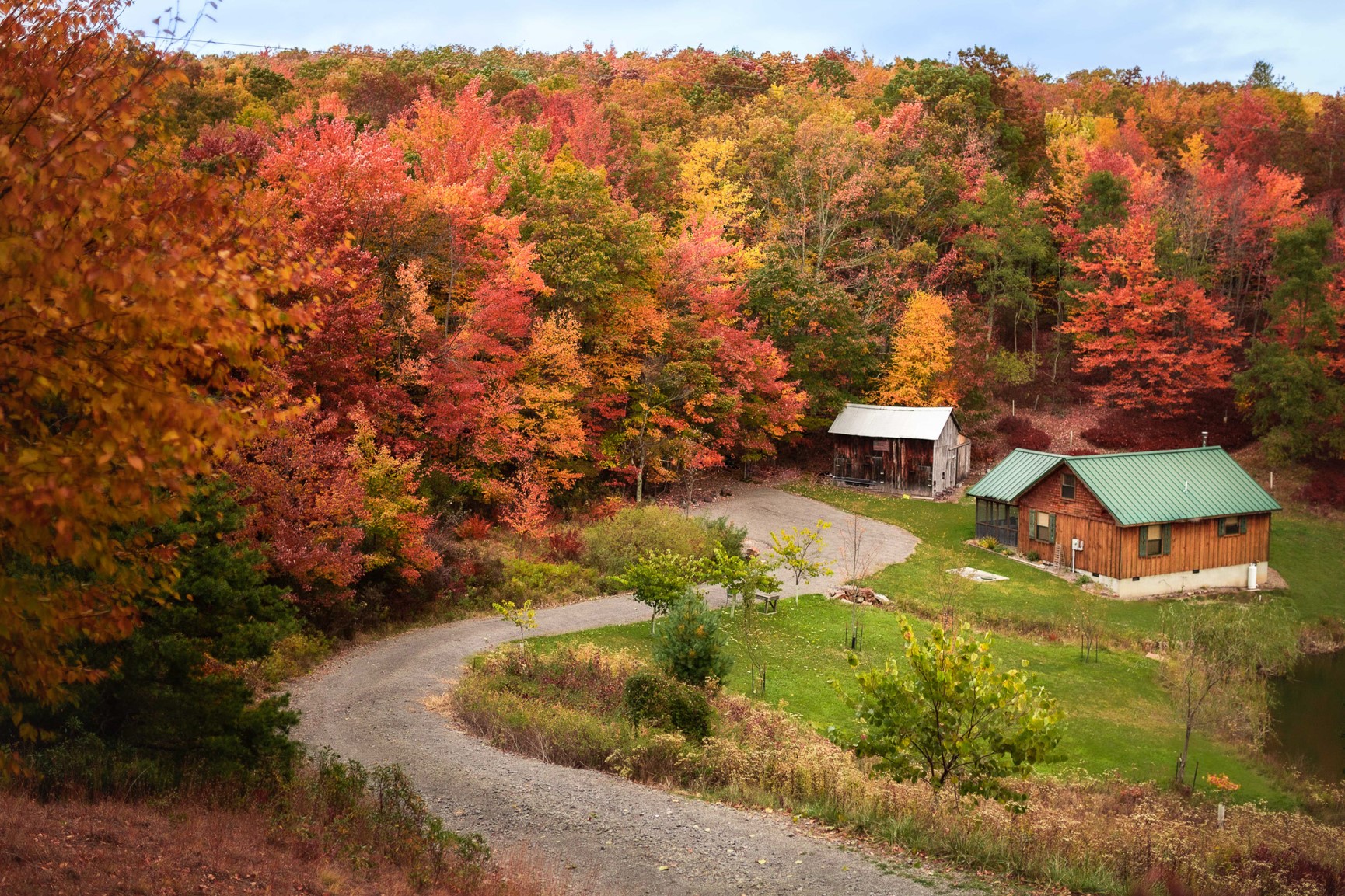
Are you excited to take some beautiful fall foliage photos this season? We are too! Here at Explore Fall, photography and photo reports are critical to what we do. The vibrant scenes of multicolored fall foliage are something we look forward to every year, simply because it’s such an enjoyable and beautiful time to be outside. Photography is an accessible way for just about anybody to enjoy and share that beauty. We’ve compiled this list of tips from the professional photographer on our team to help you prepare for capturing those colorful scenes and enhance your fall photos this year.
To start, you need to find the fall colors. Our interconnected world of the internet offers some incredible resources to find good locations. Depending on your level, here are our recommendations for how to do fall foliage research for photography:
Just heading out with your phone or simple camera and hoping for a good time? Start your photography trip with these resources:
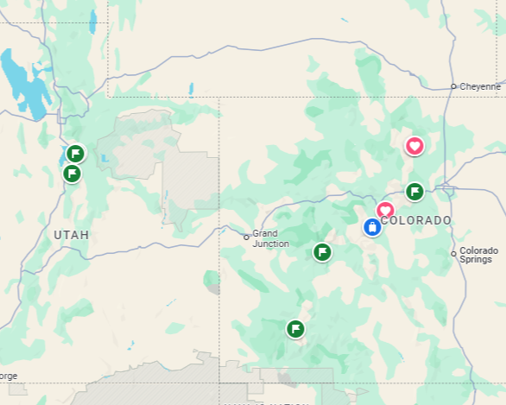
Use Google Maps to research and save locations for your fall photos.
Have a nice camera and feel comfortable with reading detailed maps? These will help you find original photo frames with the best colors around.
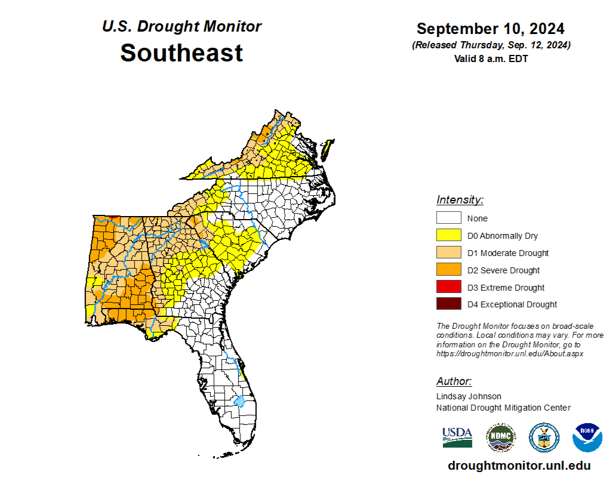
The drought monitor can help you avoid the dull colors. Find areas that have low or no drought for more vibrancy in the leaves.
Including the resources mentioned above, here are some resources to help pinpoint your fall frames.
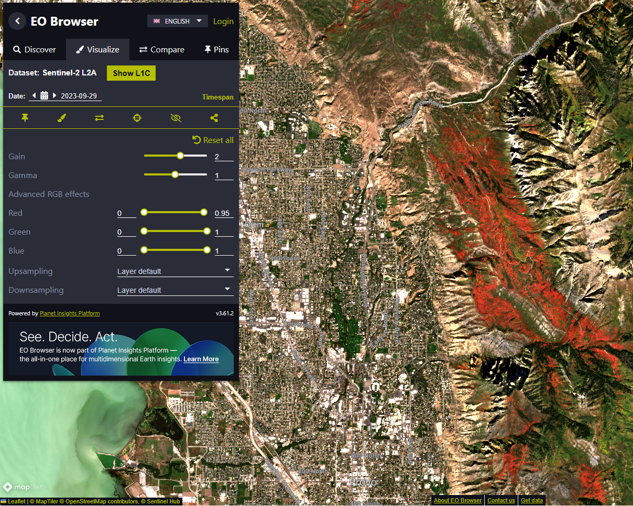
The Copernicus EO browser with Sentinel-2 satellite imagery.
We recommend against using social media to find spots to photograph. The most rewarding photography, and oftentimes the highest quality shots, come from areas that you’ve researched, discovered, or explored for yourself. Plus, it’s quite rewarding to know that you have an original frame that few other people have shot. Popular locations that are touted on social media are usually crowded, meaning you’re standing next to dozens of other photographers and waiting for people to move out of your shot. Crowds like this can be harmful to the natural environment too. There are many stories of over-visited locations that are covered in graffiti, trash, and other severe types of damage. Enjoy the peaceful vibrance of the autumn season, and go somewhere new!
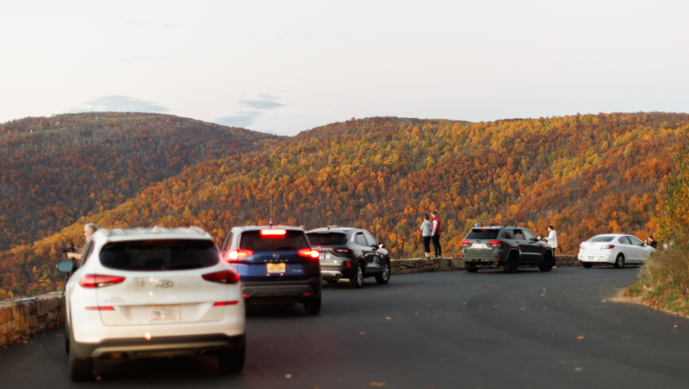
Don’t love the crowds? Avoid the social media hotspots.
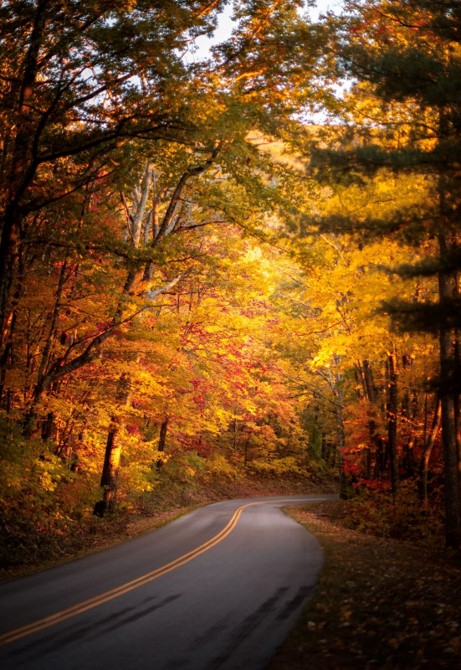
Golden hour brings soft, warm sunlight and dynamic shadows.
The weather plays a significant role in the ease and quality of capturing fall photos. Contrary to what you might think, a clear sky on a crisp day is actually not the best time to capture colorful landscape photos. Bright, direct sunlight will add a lot of contrast to your photos and wash out most of the color. Cloudy skies with soft, dispersed light is better. A little bit of rain or fog is the best. Moisture and soft light on leaves bring out color very well and may add a soft, dreamy feel to your shots.
If you’re up for it, pick a rainy or cloudy day for your photography. If you have to shoot in bright sunlight, use a CPL filter (you can either screw it onto your lens or buy a clip-on for your phone). For an even dreamier look in your photos, combine a cloudy day with an ND filter to shoot long exposures. With the right filter (look for a variable ND or something >20 stops), you can shoot exposures longer than 30 seconds which will smooth out the clouds and any spotty light.
The time of day also matters. Although bright daylight is the easiest time to be out and about, it’s well worth the effort to shoot during “golden hour.” This is the hour (or so) when the sun is low in the sky in both the morning and evening.
Golden hour in the morning is immediately after sunrise, and golden hour in the evening is the hour before sunset. Want to avoid crowds at a popular spot? It’s often worth losing a little bit of sleep early in the morning to get out for the good light.
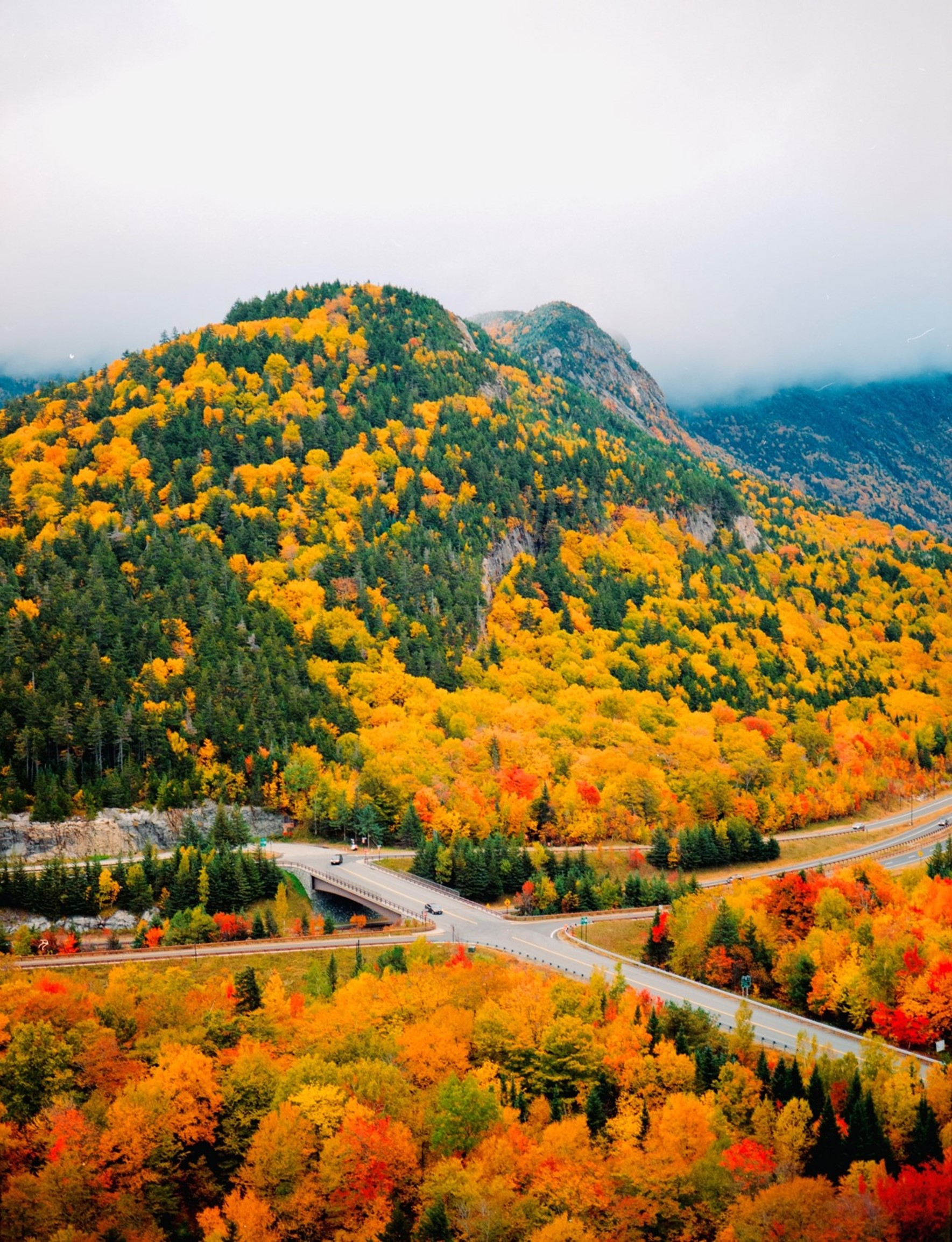
Film photos add an extra level of planning and preparation, but the results bring an exceptional character to your photos. Special thanks to @showupanyway for letting us share this film photo.
Don’t have an expensive DSLR or mirrorless digital camera setup? No worries. Modern smartphones have pretty remarkable photo capabilities. Everything we mentioned above still applies. The time of day and weather matter, and capturing the right location with a plan is critical.
Engaging fall color photography can be achieved in plenty of other ways too. Modern digital photography is of course a wonderful medium, but here are a few other options to consider.
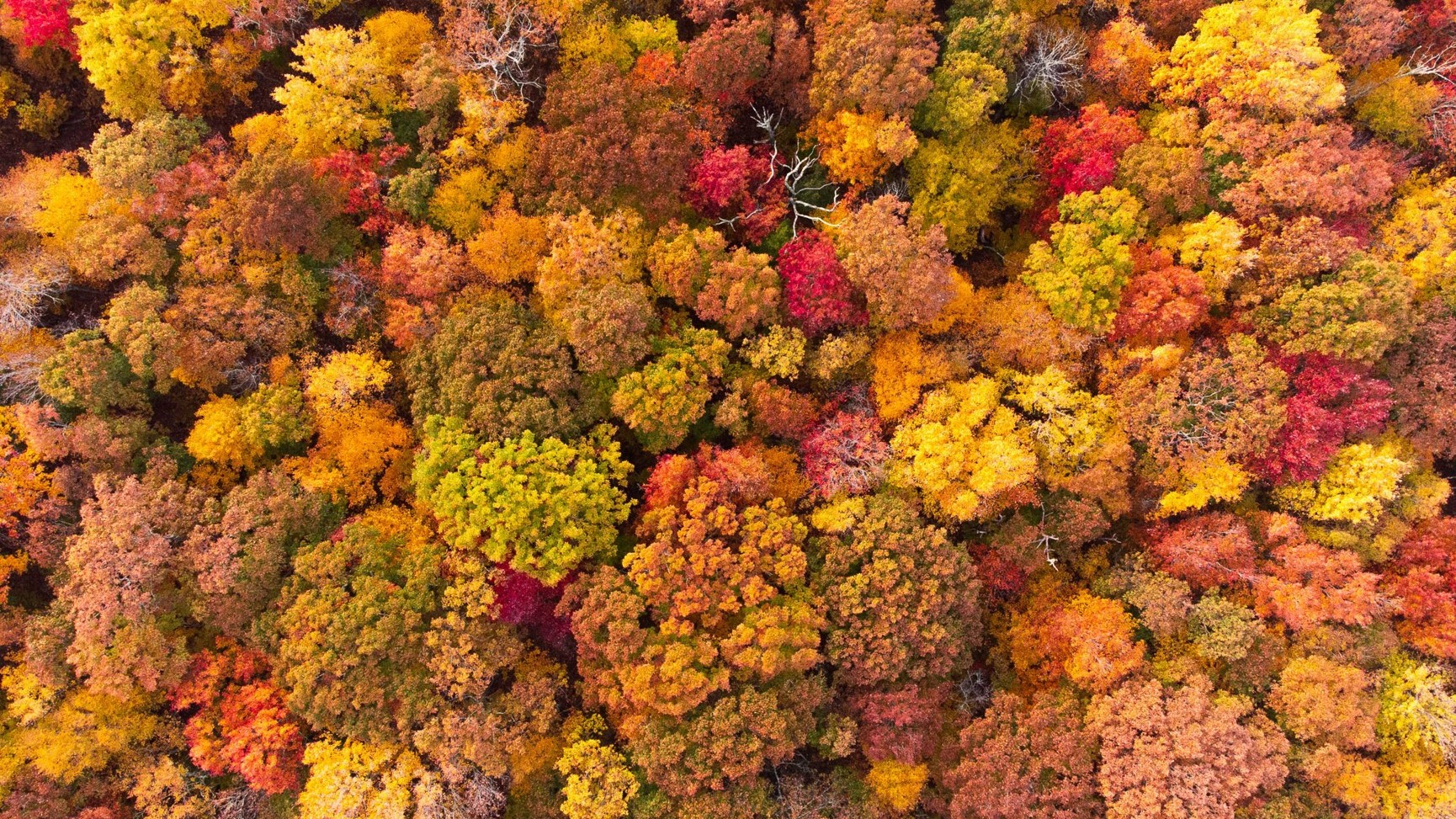
Top-down view from a drone.